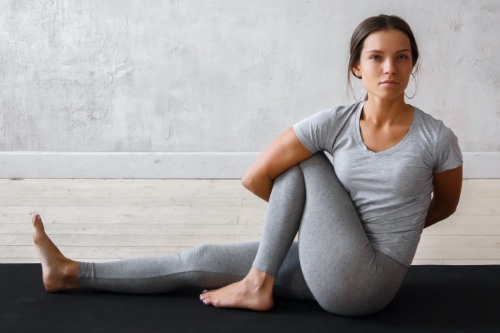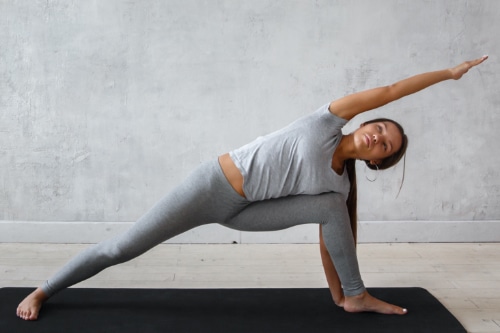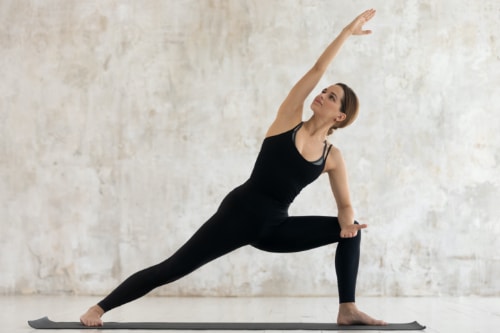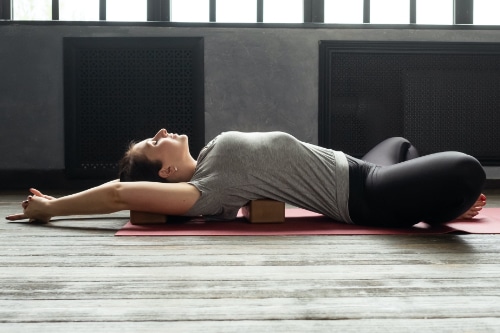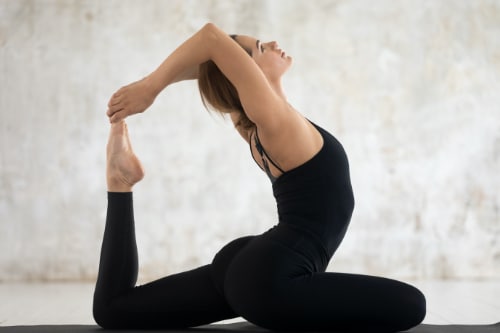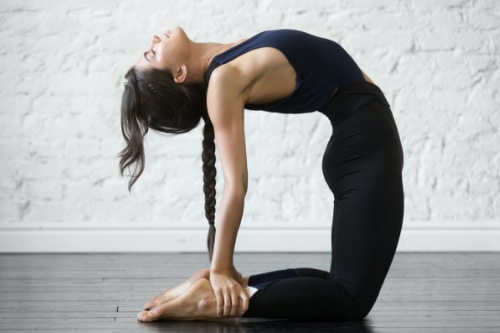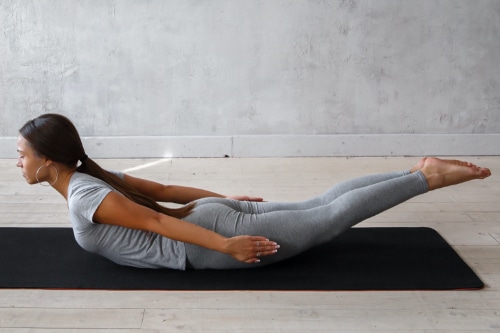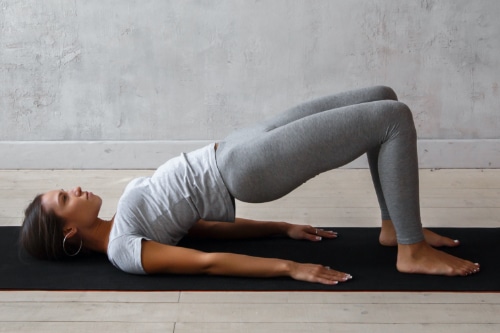Yoga Poses for Those Sculpted Abs!
Summary: Yoga is a practice that is mental, spiritual, social, and physical. The breathing and posture exercises help in strengthening, flexibility and toning of muscles. There are various exercises to help the body with specific needs. Here are 8 asanas described to help you achieve well-defined abs.
An Introduction to Yoga – What is Yoga?
The word yoga derived from the Sanskrit word “yuj” which means to unify and bring about integration internally. Yoga is an all-rounded unification of the mind and body. You can use it as an exercise form to sculpt and tone your body’s muscles safely. Yoga is the spiritual path to moksha (ultimate liberation) and samadhi (highest meditative consciousness). It is better than other forms of exercise because of its restorative abilities.
Yoga exercises and postures are called asanas. It is important to learn the techniques of each asana under supervision to avoid injury. A well-balanced meal facilitates in reaping the benefits of yoga quicker and in a more permanent manner.
Simply put, yoga is a practice towards attainment of internal oneness to feel whole and complete. A practice as old as time in our country, yoga is of knowledge.
What is the Concept of Yoga Based on?
Yoga is a state of wholesomeness comprising a few philosophies together.
- Goal-oriented discipline
- Developing the ability to control the mind and body
- Following a yogic school of philosophy
- Developing practice for yoga
- Following a particular yogic technique
What are abdominal muscles?
The abdominal muscles comprise a set of 4 muscles forming the core of the body. These form a protective wall of 3 layers and are important for movements of the torso between the rib cage and pubis. From outer to inner, these are the external oblique, internal oblique, and transverse abdominis, which extend themselves between the pubic bone and the backbone.
The rectus abdominis, on top, has white fibrous tissue running across horizontally in 3 or more parts, dividing the muscle into 10 packets. This is the muscle responsible for the appearance of abs superficially, while the transverse abdominis comprises the deeper side abs or cuts in a tapering down manner. A smaller muscle called the pyramidalis is found at the lowermost part above the pubic bone.
These muscles are strengthened by working on the criss-crossing of the muscle fibres. This is achieved by the movement of the external oblique downwards and forwards, the internal oblique upwards and forwards, while the transverse abdominal moves horizontally forward.
Functions of the Abdominal Muscles
- Act as muscles of exhalation
- Provide lumbar support
- Help during childbirth, urination, defecation, emesis
- Aids in coughing and singing
- Important for posture
- Bending of the spine
Knowing the finer details about these muscles help us realise which exercises can bring about a desired change in the physical appearance of these muscles.
Yoga asanas for toned and sculpted abs
#1 Marichyasana
This asana helps in strengthening the shoulder, back, and abdomen. It is a sitting posture involving twisting of the upper body and has 4 variations. This helps in toning and strengthening the abdomen muscles, a strong core for the body, elongating the spine, and aiding in flexibility.
Avoid this asana if you suffer from an abdominal anomaly like a hernia or a back injury.
#2 Utthita Parsvakonasana
This asana opens up the body. It works on the Transverse Abdominis muscles which are on the side of the body. It involves a side stretch of the body while in a balanced squatting position.
Utthita means extended, Parsva means side, Kona means angle, and Asana means posture.
Avoid this asana if you suffer from a shoulder or a knee injury.
#3 Parsvakonasana
Pasrva means side plank, Kona means angle, and Asana means posture. This asana works to strengthen the spine, hamstrings, and abdomen muscles. It is a side-extending exercise with keeping your knees bent while maintaining balance and outstretching your arms.
Avoid this asana if you suffer from low blood pressure, back ailments, knee injuries.
#4 Supta Baddha Konasana
This is also known as the Reclining Butterfly Pose. Supta means lying down, Baddha means bound, Kona means angle, and Asana means posture. This asana, performed while sitting down with legs bent sideways and flat on the ground, is great for opening up the hips and working on the lower abdominal muscles.
Avoid this asana if you have a knee injury or a back injury.
#5 Eka Pada Rajakapotasana
This asana is meant to work on the abdominal organs and muscles. Extend one leg backward, completely straight below the body, and flat on the mat, while folding the other leg in the way that the heel is just in front of the pubic bone. Keep the back straight and upright and hold for a few seconds before repeating it on the other side.
#6 Ustrasana
This asana involves kneeling upright on your legs and bending backward to touch your heels with your hands. Holding in this posture is important to strengthen and tone abdominal muscles.
#7 Viparita Shalabhasana
This is also known as the Locust Pose. It is a back-bending exercise that strengthens the abdominal muscles by stretching them. You will have to lie down on your stomach and lift your legs up from behind while simultaneously lifting your neck while keeping your arms straight in front of you.
#8 Setu Bandha Sarvangasana
This is also known as the Bridge Pose. This is an exercise supported by the shoulders and is an inverted back bending. It involves lifting of the hip while the shoulders and feet stay fixed on the ground.
Avoid this asana if you have hypertension, spinal or neck injuries.
Conclusion
Yoga for developing abs aids in stimulating the underlying abdominal organs and helps in smooth digestion of food, thereby reducing any buildup of fluid or gas. While other workouts focus mainly on specific body parts, any form of yoga has multiple benefits. The effects on these muscles are long-term and lasting. Some workouts tend to mainly add bulk to muscle or tone, but yoga allows for muscles to stretch, strengthen, develop, and tone, all at a rate that is uniquely significant to one’s body type.
Sources:
- B.D. Chaurasia’s Human Anatomy Sixth Edition
- Gray’s Anatomy for Students Second Edition by Elsevier
- artofliving.org
- en.wikipedia.org
Frequently Asked Questions (FAQs)
A. Yoga is a gentle age-old practice that tones and defines multiple muscles in the body while also focusing on centering the mind with discipline and overall consciousness. It is also less prone to injury.
A. The ultimate aim of yoga is to free oneself of materialistic burden, attain liberation from worldly issues, and have a complete mind-body integration with complete awareness.
A. Abs are developed by those who want to work on a certain aesthetic appearance. What is important is to strive towards having a healthy body and mind.

